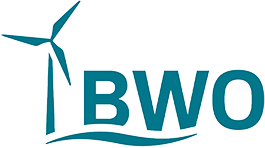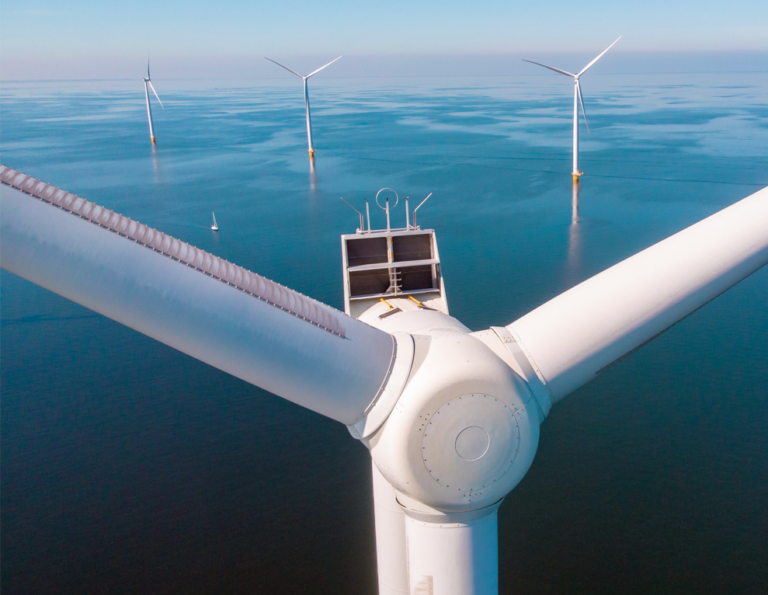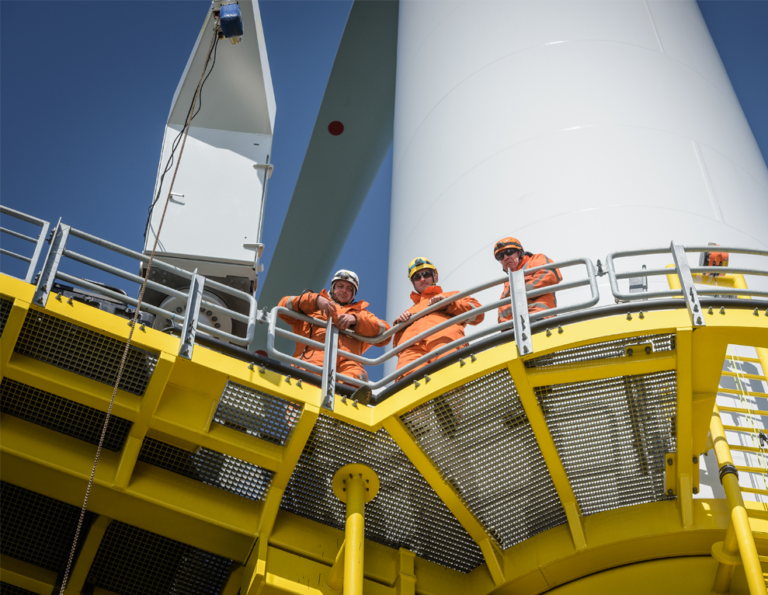Six steps to hydrogen production at sea
Joint press release
June 2, 2022
In a joint agenda paper, eight associations and networks as the “Offshore Wind H2 Eight” are committed to six steps that will help make hydrogen production at sea in Germany possible. Central goals of the initiative: To strengthen the contribution of this technology to the decarbonization of industry and to increase the variety of sources for domestically produced "green" hydrogen.
"The production of hydrogen at sea in the German exclusive economic zone offers great opportunities for the expansion of electrolysis capacity for the goals of the national and European hydrogen strategy and for offshore wind energy development in Germany, if it is made possible on economic terms. We now need a sprinter program so that we don't miss out on the international connection," said the offshore wind H2 eight players.
With the six measures listed, the establishment of a Green Hydrogen Union can succeed and thus also strengthen cross-border cooperation with neighboring European countries. The generation and upstream industrial production in Germany and the construction of production plants for green hydrogen with the European partner countries offer long-term employment prospects for skilled workers who need to be qualified. The development of a hydrogen economy is associated with enormous growth potential for German mechanical engineering and the economy as a whole.
The Offshore Wind H2 Eight therefore recommends six measures:
With the six measures listed, the establishment of a Green Hydrogen Union can succeed and thus also strengthen cross-border cooperation with neighboring European countries. The generation and upstream industrial production in Germany and the construction of production plants for green hydrogen with the European partner countries offer long-term employment prospects for skilled workers who need to be qualified. The development of a hydrogen economy is associated with enormous growth potential for German mechanical engineering and the economy as a whole.
The Offshore Wind H2 Eight therefore recommends six measures:
1. Decide on a mandatory quantity target for green hydrogen and provide the corresponding areas
The expansion target for offshore hydrogen generation should be set at ten gigawatts by 2035 in the National Hydrogen Strategy and in the Wind Energy at Sea Act (WindSeeG) in order to show a stable development path. The only planned area in the North Sea so far is far too small with its potential of 300 megawatts. Additional space is needed to enable the market to ramp up and various concepts to be tested on an industrial scale. Ideal are offshore areas that are suitable for offshore wind energy, but for which a power connection would be too costly by 2035. According to the undersigned, this is how the offshore wind energy potential can be realised. The organizations welcome the task of examining the draft law for an amendment to the WindSeeG for the nature-friendly development of an additional potential of 4 to 6 gigawatts of wind energy at sea in the "duckbill" of the German exclusive economic zone (AWZ). As part of a Sprinter program for green hydrogen production in Germany for 3 gigawatts (2 gigawatts offshore plus 1 gigawatt onshore), the undersigned are proposing tenders for the first quarter of 1.
2. Broadly define EU legal requirements for the purchase of electricity for electrolysis
In order to be able to produce enough hydrogen at competitive prices, the requirements for electricity procurement for electrolysis must be as broad as possible. The specifications of the Renewable Energy Directive (RED II) of the European Union (EU) do not do justice to this. The limitation to new systems leads to a considerable increase in the costs of electrolysis and to being able to produce significantly less green hydrogen with the same electrolyzer performance. When implementing the EU rules, the federal government should therefore also consider older renewable energy systems that have been subsidized as additional.
3. Enable hydrogen collection pipelines in the North Sea
According to the current state of knowledge, a hydrogen collection pipeline in the North Sea can offer advantageous conditions for the transport of green hydrogen on land in the case of larger quantities of green hydrogen produced offshore. In addition, given the current dynamic level of development, new insights are constantly being generated in the sense of an overall economic view. According to a current study, a pipeline offers considerable advantages over laying sea and land cables in terms of time savings and environmental compatibility, especially over longer distances. With an installed generating capacity of 10 gigawatts, 5 cable systems would be required for a comparable electrical output. “The spatial planning for an efficient route must be adapted for this. In this respect, we welcome the approach in the draft of the WindSeeG amendment, according to which collection pipelines from other energy generation areas are given the same status as previously planned direct current routes," say the organizations.
4. Make the production of green hydrogen economical
Green hydrogen is not yet competitive with hydrogen produced from fossil fuels. Developing a competitive market design for offshore wind hydrogen is therefore a necessary step to level out cost differentials. A program to support the market ramp-up of a German hydrogen industry and green hydrogen production should include a sustainable funding volume of at least 10 billion euros. This program underpins the climate targets and the energy supply in equal measure.
The funding concept is to be based on the tested, EU-compliant, market-oriented system of H2Global and initially support at least 2 gigawatts of electrolysis capacity. Similar to the previously import-oriented H2Global program for domestic generation, Carbon Contracts for Difference should offer the possibility of stimulating the willingness to buy green hydrogen.
The funding concept is to be based on the tested, EU-compliant, market-oriented system of H2Global and initially support at least 2 gigawatts of electrolysis capacity. Similar to the previously import-oriented H2Global program for domestic generation, Carbon Contracts for Difference should offer the possibility of stimulating the willingness to buy green hydrogen.
5. Start training and employment program
The shortage of skilled workers is also increasing in the offshore wind industry and all other areas of the energy transition. The expansion of wind energy at sea and the development of a green hydrogen economy depend on well-trained specialists. The signatories therefore call for the requirements of the energy transition to be adapted to the requirements of school, vocational and academic education. This includes strong promotion of women in so-called technical professions. In addition, the framework conditions for employees in Germany must be competitive in global competition in order to continue to be attractive for qualified personnel. The competition for these specialists is already picking up speed.
6. Hydrogen partnership between politics and business form
The undersigned organizations are committed to a partnership between politics and business in order to participate quickly and effectively in setting the necessary course and to accelerate the expansion of renewable energies together with green hydrogen, especially at sea. This is what the "Offshore-Wind-H2-Acht" stands for, a joint initiative founded in 2021 by the signatory players.
The signatories to the paper include the AquaVentus Association, the Federal Association for Offshore Wind Energy, the German Hydrogen and Fuel Cell Association, the Association for the Promotion of the Cluster Renewable Energies Hamburg eV, the Network Agency for Renewable Energies Schleswig-Holstein EE.SH., IG Metall, the Offshore Wind Energy Foundation and the Wind-Hydrogen Association and the Innovation Cluster WAB eV




